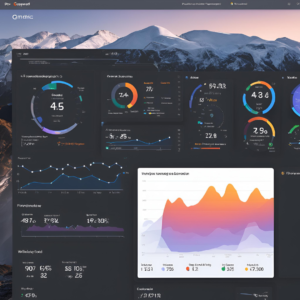Improving Your WordPress Site Performance: Tips & Tools

Website performance refers to the speed and efficiency with which a website loads and interacts with users. It’s how quickly your pages appear on the screen, how well they respond to visitors, and how seamless the customer journey is from start to finish. A well-performing site is not only about rapid loading time but also ensuring that users can navigate without hassle.
Prioritizing website performance is crucial for several reasons:
When assessing your site’s performance, keep these metrics in mind:

There are many tools available to assess your site’s performance. Some popular options include:
After running your site through assessment tools, take a moment to understand the results. Look for suggested improvements and prioritize them. For instance, if a tool indicates that your site loads in 5 seconds, but best practices suggest under 3 seconds, that’s a significant area for improvement.
Performance bottlenecks are parts of your site that slow down the overall loading time. Common culprits can include:

Images make your site engaging but can slow it down if not handled carefully. Here are some tips:
Efficient management of CSS and JavaScript can help your site run smoother. Consider:
Delivering your content effectively is all about speed. Here are some best practices:

Caching temporarily stores copies of your site’s pages and content so that repeated requests can be served faster. When a user visits your site, they receive the cached content, reducing load times significantly.
There are several types of caching you can implement:
Implementing caching plugins can simplify this process:

Different hosting types come with various performance levels. Here are some common options:
Consider performance metrics when assessing potential hosting providers:
When selecting a hosting provider, keep in mind:
Recap of Key Strategies
By focusing on website performance through analysis, content optimization, caching, and the right hosting, you can greatly enhance your WordPress site.
The Long-Term Benefits of Improved Performance
Improving your site’s performance not only affects user experience and SEO rankings but can also lead to long-term success for your brand. As visitors enjoy a speedier, more engaging experience, you’re likely to see better engagement metrics and increased revenue.
What is considered a good loading time for a WordPress site?
A good loading time is typically under 3 seconds, but the faster, the better! Aim for the quickest load possible for an optimal user experience.
How often should I assess my site’s performance?
Regularly checking your site’s performance can help ensure it stays optimized. A good rule of thumb is to review performance at least once a month or after significant updates.
Can using too many plugins slow down my site?
Yes, using too many plugins can significantly slow down your site. It’s essential to regularly evaluate and remove any plugins that are not necessary or efficient.